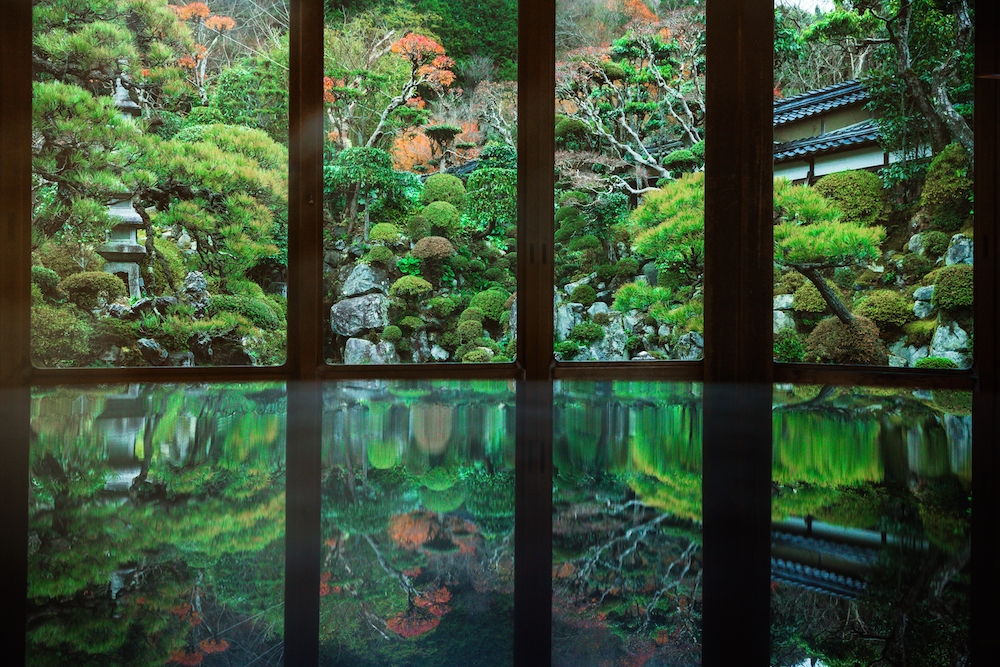As with neighbors anywhere, the Japanese prefectures of Tottori and Shimane are playful rivals. While both are sparsely populated and somewhat regionally isolated by the Chugoku mountain range, Shimane likes to flaunt its spiritual superiority as the home of the Izumo Grand Taisha shrine. In fact, however, Tottori has its own claim to divinity with Mount Daisen.
All competition aside, Tottori—as with its northeasterly neighbor—is a fantastic destination to experience the best of the outdoors, cultural offerings and interesting culinary trends that match those of any urban center.
Stay for a few days with the accommodating locals who can show you how to truly appreciate all that Tottori Prefecture has to offer.
Rejuvenating Local Communities through Food
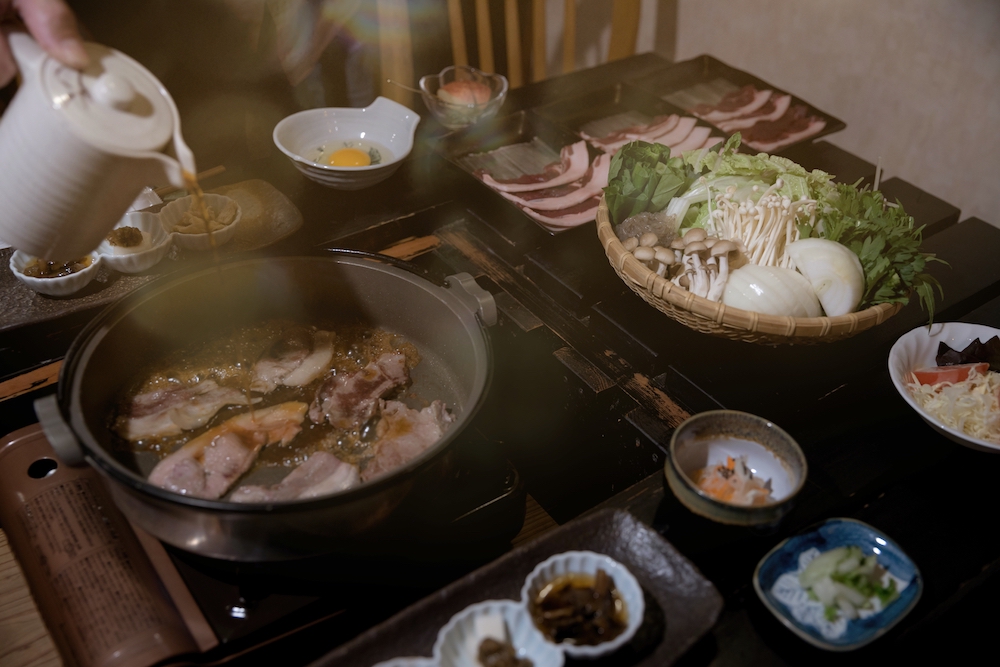
Photo by Solveig Boergen
When we pulled in to the multi-story café, hotel and local tourist center complex at Mount Daisen’s edge, it was the golden hour that was entirely befitting of the café sign out front, which read Komorebi+o—a clever word play on komorebi (sunlight filtering through trees) and person or traveler. It was a perfect time to sit down and enjoy a late winter afternoon coffee amidst the cozy, foliage-adorned interior.
Officially titled Komorebi+o Gibier Food&Café, after the French gibier (game), proprietor and Daisen native Eisuke Kodani told us that the popular specialty is inoshishi (wild boar), sold as both burgers and hot dogs. The creatures’ tendencies to feed from local vegetable fields have cost the prefecture 50 million yen in damages yearly—prompting local hunters to work with restaurateurs (including himself) for a faster forest-to-table timeline. As a result, the Daisen Gibier Studio was launched in 2019.
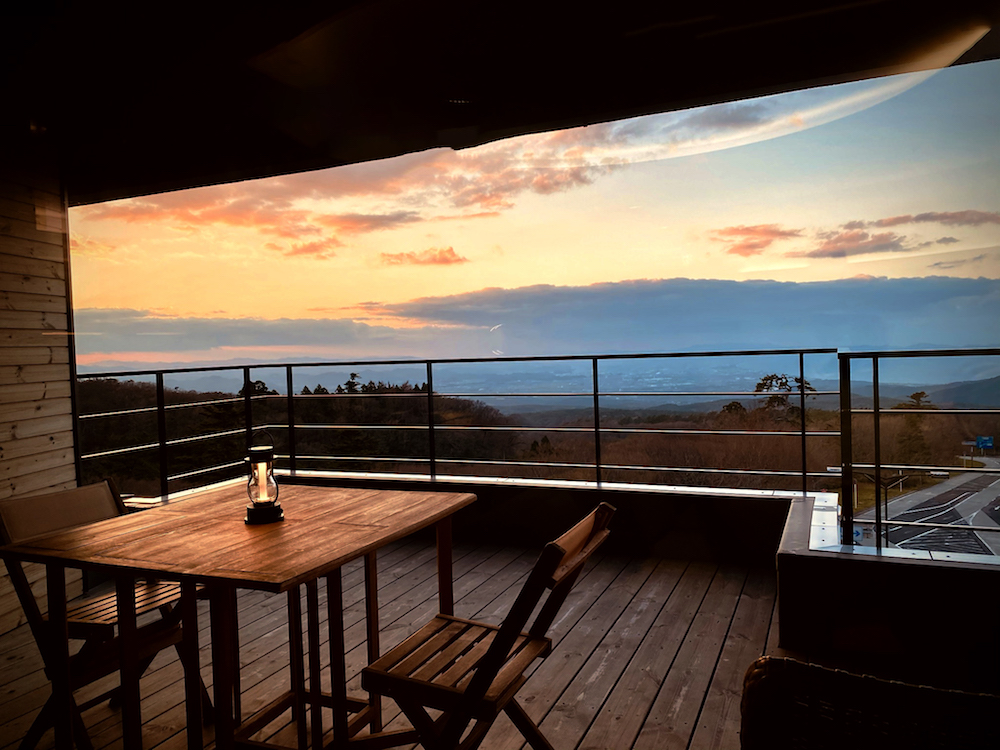
Photo by Solveig Boergen
A boar burger sourced from Kodani’s atelier certainly sounded intriguing—particularly when he pointed out its healthful benefits, and that the improved preparations meant more fragrant and tastier meat. He had other creative plans for our evening meal, however: inoshishi in the form of sukiyaki. Kodani also runs the incredibly stylish onsite hotel Itadaki (another clever moniker meaning “Peak”), whose accommodation packages include a lineup of dinner options at local restaurants—or, for guests who prefer to cook—free rein in the hotel suite’s spacious kitchen.
We walked to dinner later along the road ascending toward the mountain, which is flanked by shops selling crafts and foods including fresh tofu and locally brewed sake, as well as a craft beer pub—all attributable to the area’s pristine mountain waters. Over the meal, Kodani told us that after years living away from Daisen, he turned down an overseas job offer to return home and help with local revitalization efforts. “There are a lot of interesting collaborations happening now, like the one in the food industry with inoshishi,” he said. And raising our sake drams amidst the steam rising from the luscious dinner, we had to agree.
Mount Daisen: Slice of Heaven on Earth (and Tottori)
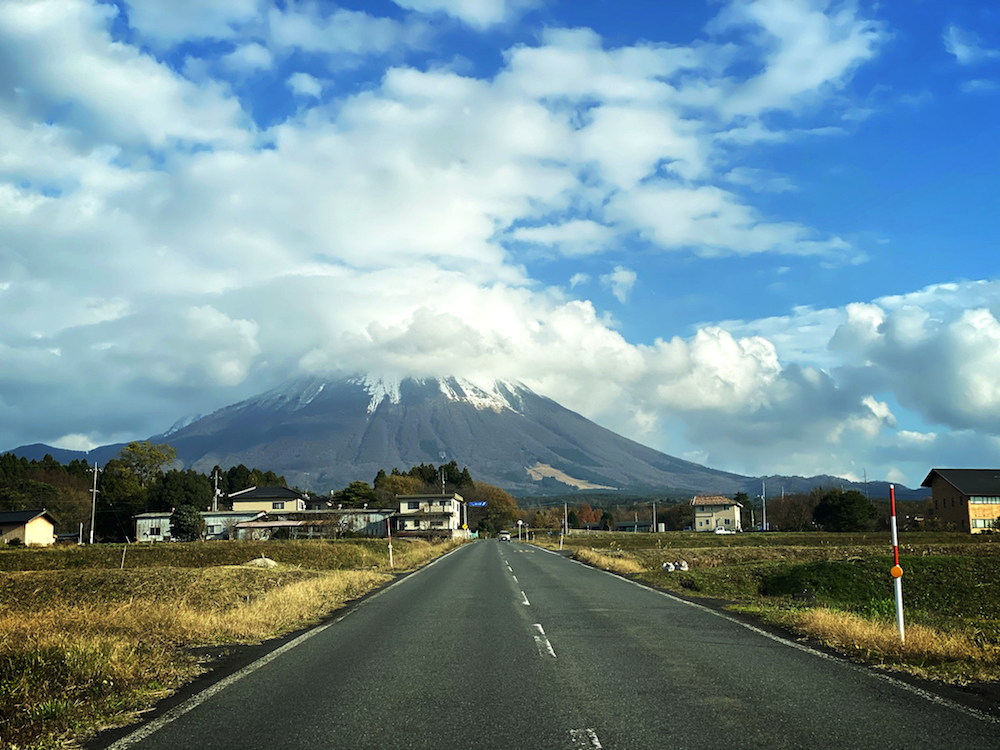
Photo by Solveig Boergen
Breakfast on the hotel’s gorgeous terrace overlooking Mount Daisen was tempting, but trekking back up the road amidst the early morning chill, feeling the mountain’s sacred atmosphere, what came next was arguably better: an exquisite spread of shōjin-ryōri (Buddhist cuisine) at Sanrakusō inn, just adjacent to Daisenji Temple. The many dishes included delicate mountain vegetables foraged by Goken Shimizu, the bespectacled abbot who presided afterward over a session of Zazen meditation.
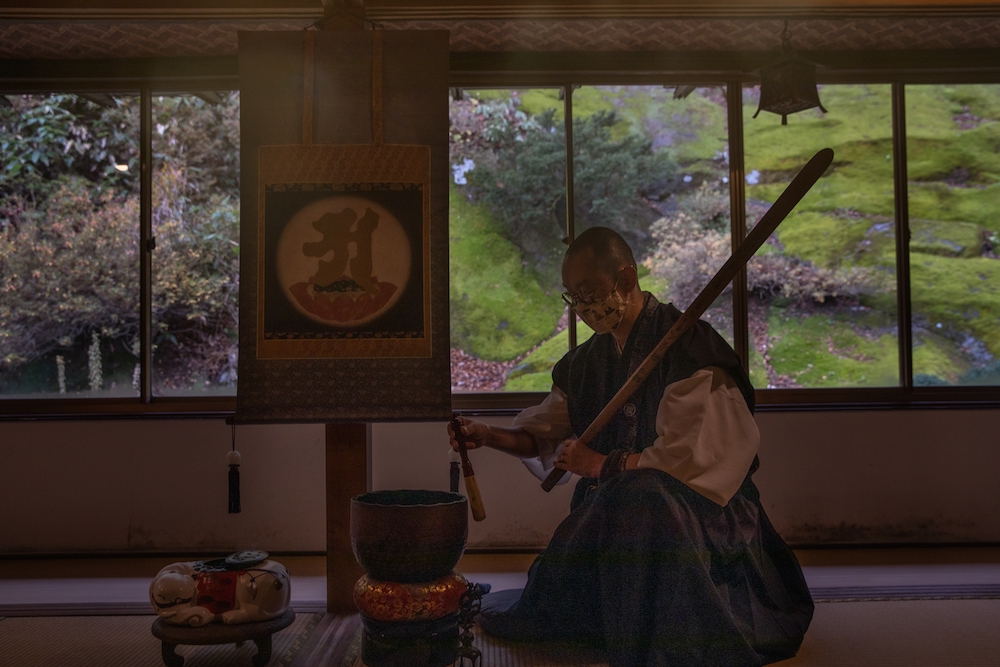
Photo by Solveig Boergen
While the practice involves being rapped with a stick for inattention, he did so only when we raised our hands to ask for it, and finished the session with some inspiring life advice. Any vegetarians put off by all the talk of wild boar may also be pleased to know that the abbot handed us a flyer for a scrumptious-looking vegan burger developed by local monks, featuring sauteéd yams, yuba (tofu skin) and crispy lotus root.
Relaxed, fed and in touch with our calm inner spirit, we next began ascending the mountain with Koichi Kuruma from the Daisen tourism bureau, who is extensively knowledgeable about its spiritual and cultural significance. He leads tours both on foot and via electric bicycle to various sites on and around the mountain, including stops to drink fresh spring water and enjoy local softcream.
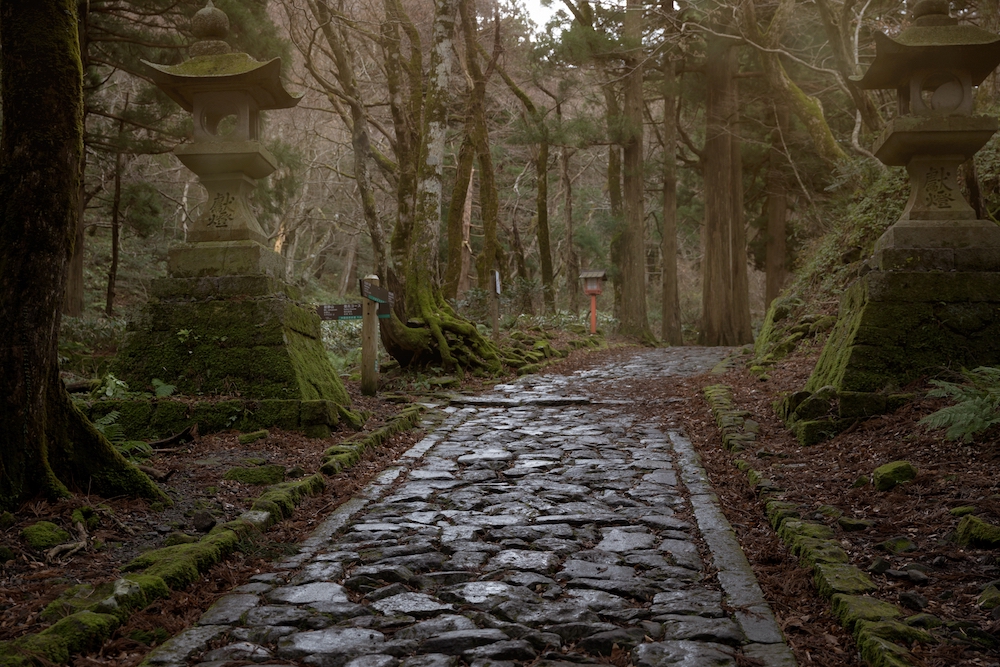
Photo by Solveig Boergen
He told us that Daisenji Temple had been utilized as a training center for shugendō (an amalgam of religious traditions based on mountain worship) between the 7th-14th centuries, and had survived upheavals including closure from 1875-1903 due to the early Meiji-era governmental crackdown on Buddhism, and destruction from fire in 1928 before being rebuilt in 1951. The mountain itself was shrouded in demon-related legends, he said, and was completely off-limits to visitors (with only minimal exceptions) until the Edo period, when protective jizō statues were erected to encourage travelers (who, Kuruma noted, also helped fill temple coffers).
Chizu: Where Nature Meets Art Meets Local Innovators
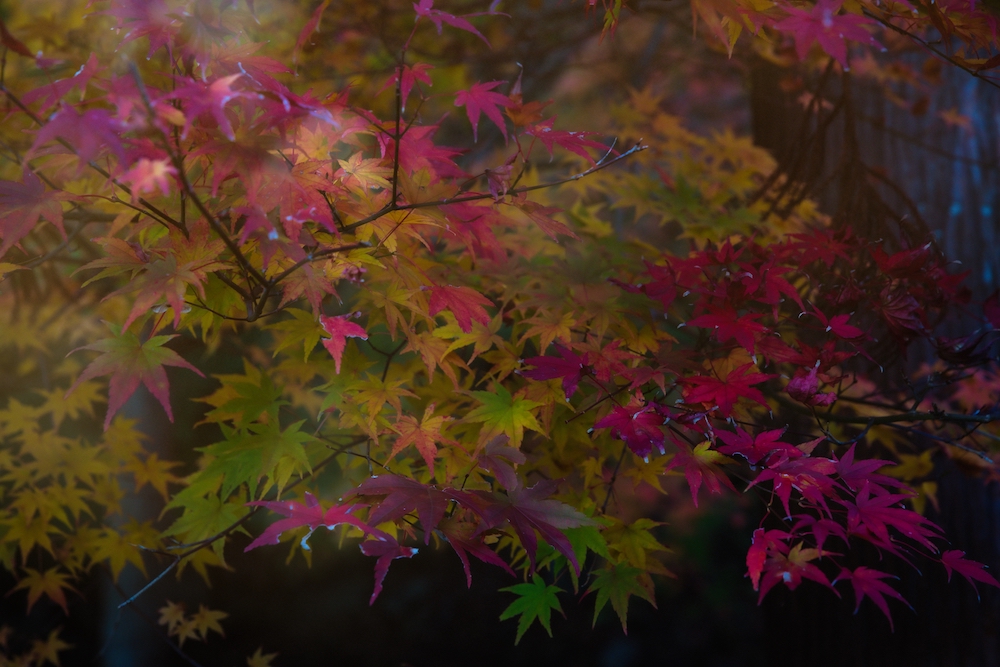
Photos by Solveig Boergen
While Mount Daisen easily merits a few days of exploration, other Tottori locales beckoned. Chizu, a lovely collection of villages and hamlets that is ranked among Japan’s most picturesque townscapes, similarly invites travelers to settle in and slow down. We began with lunch at a renovated kominka (folk house) café, Nodoka, whose interesting twists on the classics included gingered walnut tofu, yuzu-infused miso soup, and pickled daikon that was harvested that morning by chef Kae Maebashi’s grandmother, who is also a local aizome (indigo) artisan.
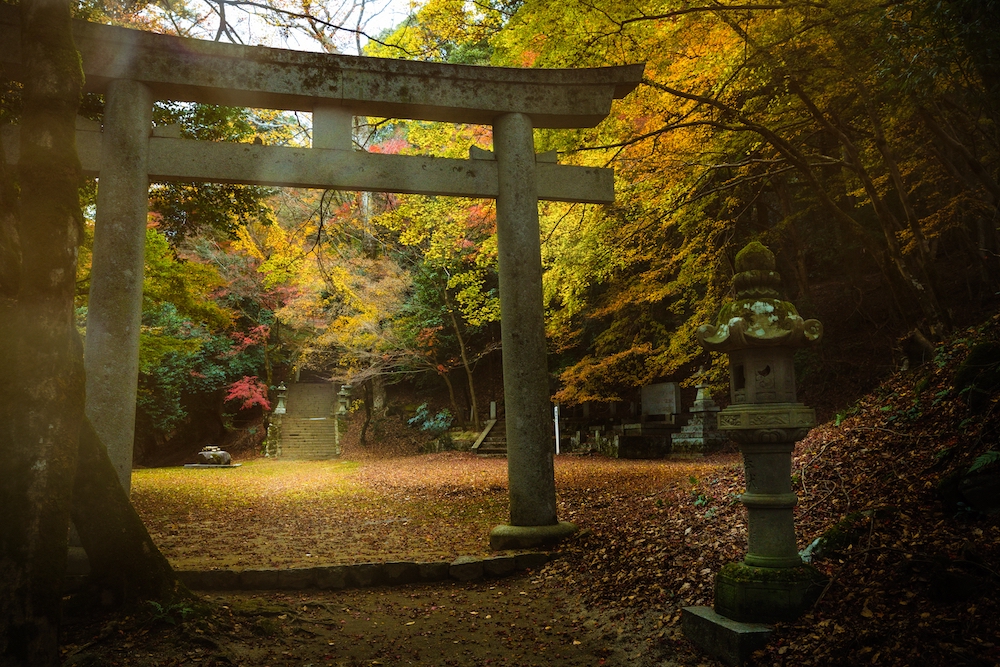
Photo by Solveig Boergen
We walked off our lunch at the imposing Suwa Shrine, and while we did not dare attempt its massive staircase, we admired the blazing autumnal glory of its keyaki and momoji trees. Our next stop was the residence of the distinguished Ishitani family, an architecturally fascinating structure that gave the feel of the city’s Edo-era history as a post station town for traveling dignitaries.
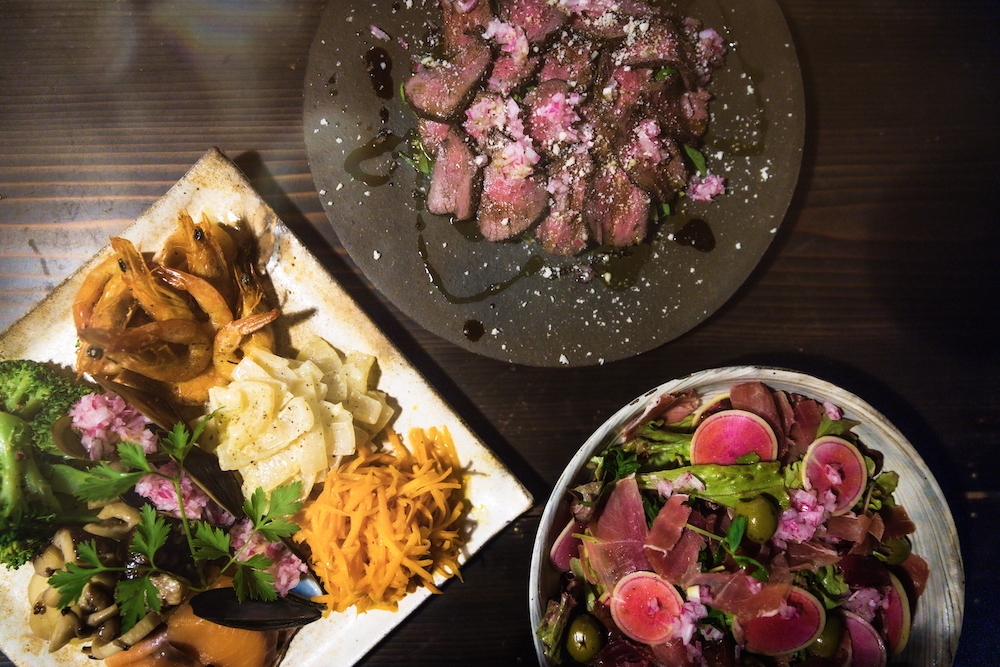
Photo by Solveig Boergen
Dinner was at Tanoshi, an attractively designed restaurant and guest house in a 135-year-old former ironmongery shop, where meals are served at a communal table. Owner Maki Takeuchi collaborated with a local designer and architect to renovate the space using what she found in the attached kura (warehouse), creatively transforming scythes into door handles and anvils into light fixtures; and re-designing lamps using old newspapers and kimono fabrics.
Chatting leisurely with Takeuchi over red wine and a dinner of tricolor salad, antipasti, and fragrant grilled deer meat accented with rosemary and parmesano, she told us that her vision was to create a place for connection. “It’s hard because there is a lot of local bureaucracy and resistance here to doing things differently from how they’ve always been—but I am determined to try.” Her latest initiative is a group formed with four other local businesswomen to try to pool their interests and talents to encourage more innovative trends in their hometown.
Another member of the group was Tomoko Murao, who renovated her grandparents’ kominka into our accommodation for the night, Ashita no ie (Home of Tomorrow). It was cold and rainy outside, and the steamy yuzuburo (fragrant citrus bath) before bed—as well as the artfully-presented breakfast the next morning—were both welcome and comforting touches.
Yazu: Glorious Natural Vistas Amidst Japanese History
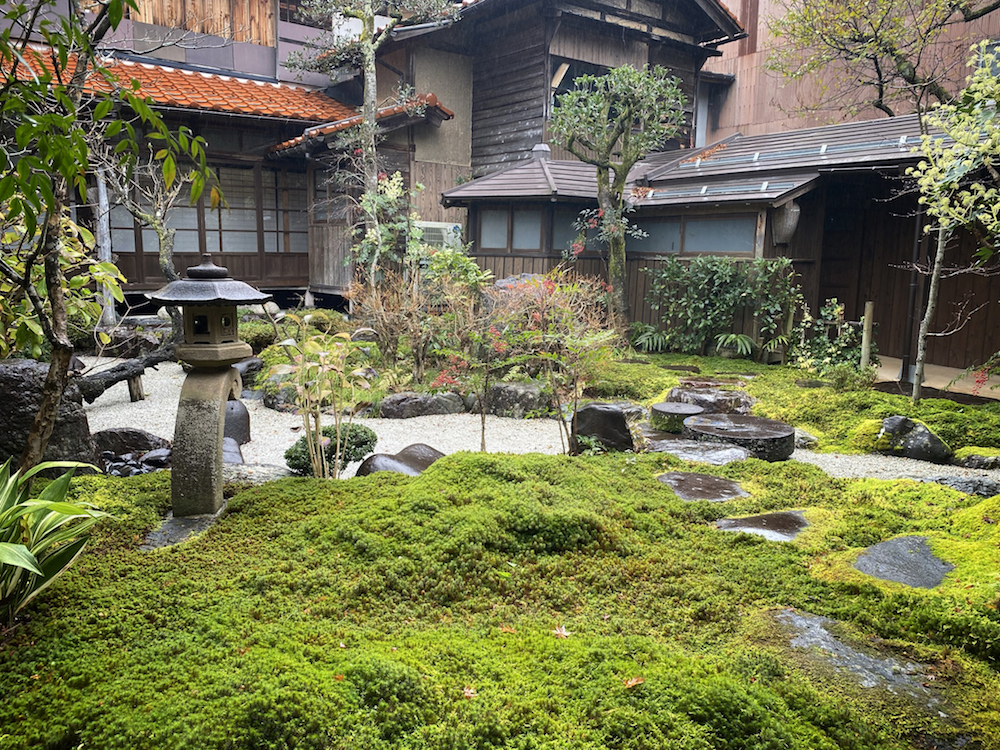
Photo by Solveig Boergen
Next on the itinerary was inland, mountainous Wakasa in the Yazu district, where much of the cedarwood was grown to help rebuild urban centers following the WWII firebombings. Two septegenarian tourism association members proudly showed us the highlights of their town: the 90-year-old train station where their faces were blackened as children by the steam locomotive; the local architecture of wooden structures offering protection from snow; the street where a row of warehouses had been strategically built in a desperate attempt to protect local temples from destruction by fire.
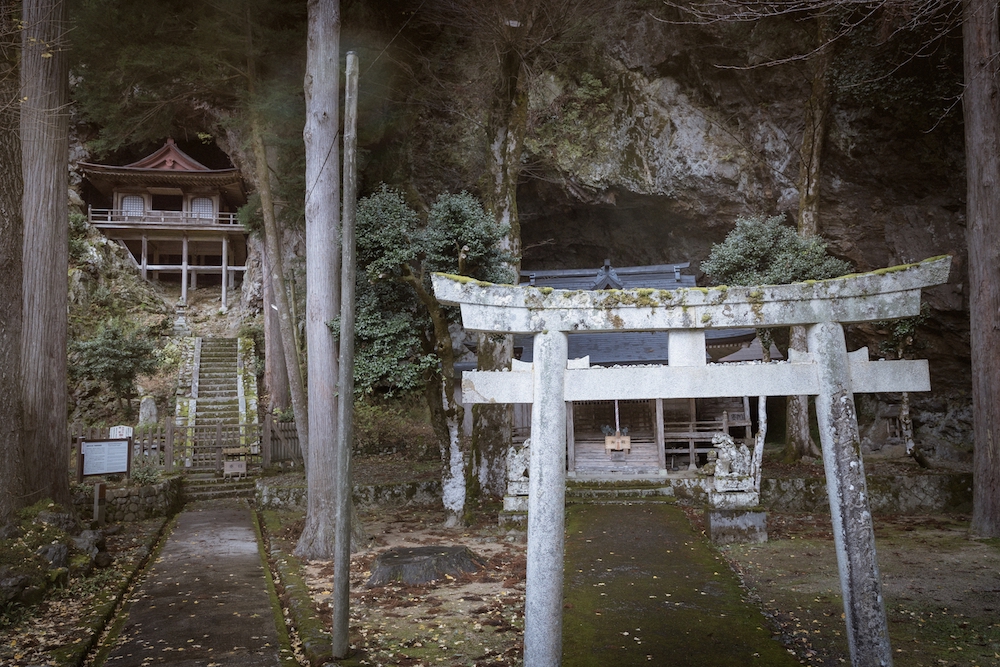
Photo by Solveig Boergen
After a lunch of mouth-meltingly tender braised pork belly at local tonkatsu restaurant Arata, they guided us to a final point of local pride: the fascinating Fudoin Iwayado Temple, which was built inside a cavern, and, like Mount Daisen, is said to have origins in shugendō worship. Before we waved our goodbyes, one of the men pointed wistfully toward the distant mountains at the remains of Wakasa Castle, explaining that it was the object of fierce battling during the Sengoku era, before being beautified and eventually abandoned over the “one-castle-one-province” law.
All of the historical commentary definitely inspired me to delve into a refresher on Japanese history. In the meantime, however, there was one final stop before heading to the airport: the Oenosato Natural Farm, also in Yazu, which offers a smorgasbord of dairy treats including fresh local eggs, cheesecake, and (honestly, what we came for): thick, spongy pancakes topped with fruit and slathered in fresh cream.
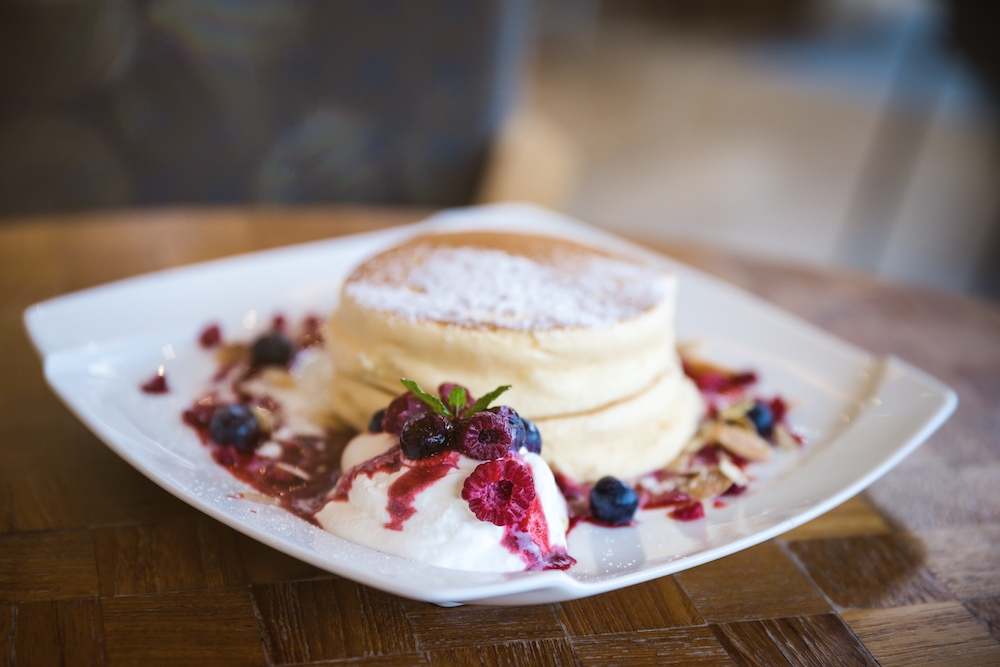
Photo by Solveig Boergen
Sadly, there was no staircase with which to work off that lunch, so we settled in to enjoy the scenery unfolding during the long drive back to the airport, which included otherworldly scenes like endlessly stretching orange persimmon globes, and sprays of fountain bamboo bending over from their heavy weight. There was so much more to experience in Tottori, I thought, such as one of the healing sessions on offer in the deep forests of Chizu, a visit to the museum in Hōki honoring late photographer and visionary Shoji Ueda, and of course the exquisite coastal sand dunes. In my heart, I could already feel myself returning.
[Sponsored Post]

